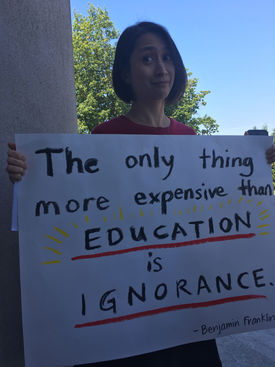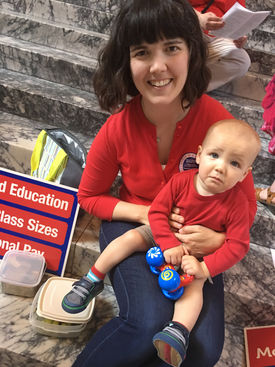New state budget increases school funding, but still falls short on McCleary

Legislators released a summary of their new education funding plan Thursday, and while it represents progress, it falls short of amply funding our students’ K-12 public schools as required by the Supreme Court’s McCleary decision.
WEA budget lobbyists are analyzing the new education budget, and it will take time to provide a detailed analysis. Based on summary information provided by the Legislature, here are key points:
It fails to amply fund K-12 schools by the Sept. 1, 2018 deadline set by the Supreme Court, although it does increase K-12 funding by about $7.3 billion over four years.
- Despite the current educator shortage, it delays funding for competitive educator salaries. While it substantially increases state-funded base pay for educators over four years, it only has a 2.3 percent COLA the first year. It eliminates the salary allocation model in 2018-19, and it will require school districts to negotiate new salary schedules with their employee unions. It also funds additional salary in districts with housing costs that exceed the state average.
-
It creates a new state-run health care system for school employees, eliminating local bargaining over health benefits. The per-employee state health care allocation will increase to the same amount legislators and state employees receive. Beginning in 2020, a coalition of school employee unions will negotiate health benefits with the governors’ office.
 The sign says it all.
The sign says it all.
- It delays funding for smaller class sizes in grades 4-12 and for additional support staff as required by Initiative 1351, but it funds smaller class sizes for career and technical classes and a few other specialized programs, adding staff positions.
- It reduces local voter-approved school levies, limiting the ability of school districts to meet the unique local needs of their students. Planned levy expenditures must be approved by the state before districts can ask voters for approval, and the state will audit how levy money is spent.
- The new plan restricts bargaining for additional educator pay beyond state-funded base pay. This is an issue that needs more review to determine the impact. A legislative summary says, “Supplemental contracts may only be used for defined enrichment activities and the hourly rate under the supplemental contract may not exceed the hourly rate provided to that same instructional staff under the basic education salary.”
-
In 2018-19, locals are prohibited from bargaining more than a COLA unless their average salary is less than the statewide average.
 The Washington Constitution guarantees every child an amply funded basic education.
The Washington Constitution guarantees every child an amply funded basic education.
- It increases funding for the Learning Assistance Program, special education and other programs that benefit the students who need the most help.
- It funds three days of professional development, but restricts how many half-days school districts can schedule.
The education budget document is over 120 pages long and was released Thursday afternoon. It’s complicated, and there are good parts and bad parts. We’ll post further information as we get it.


